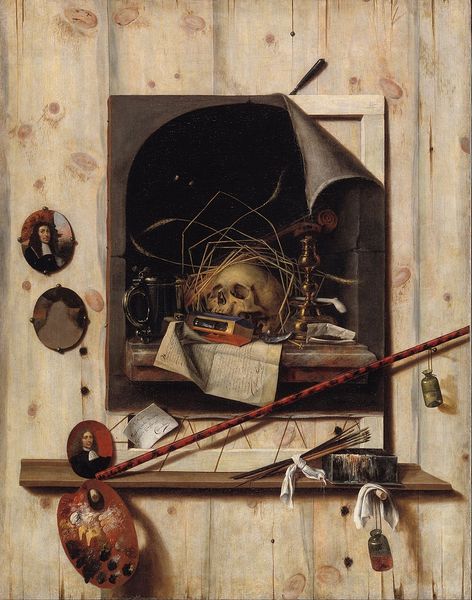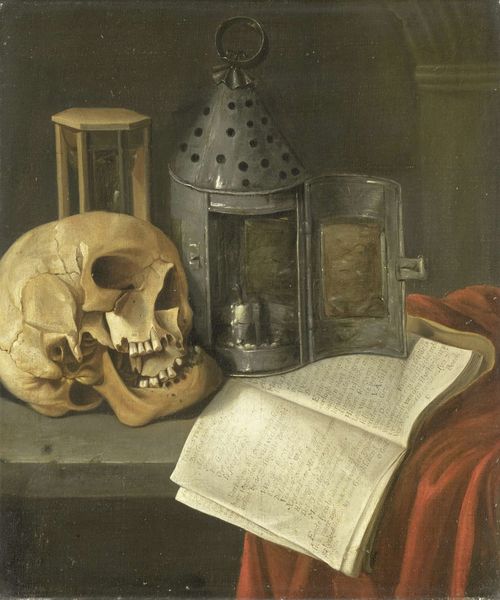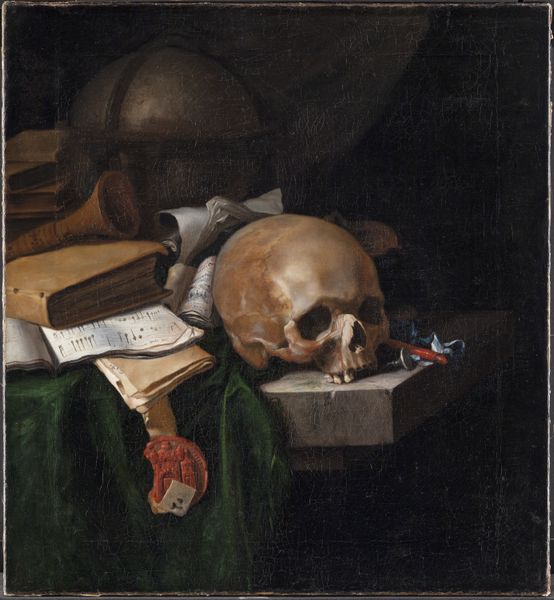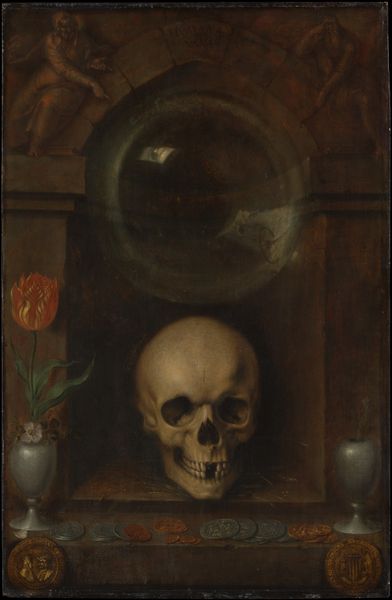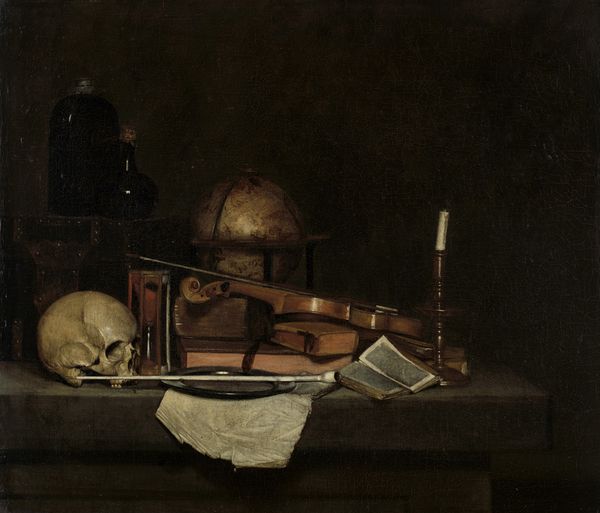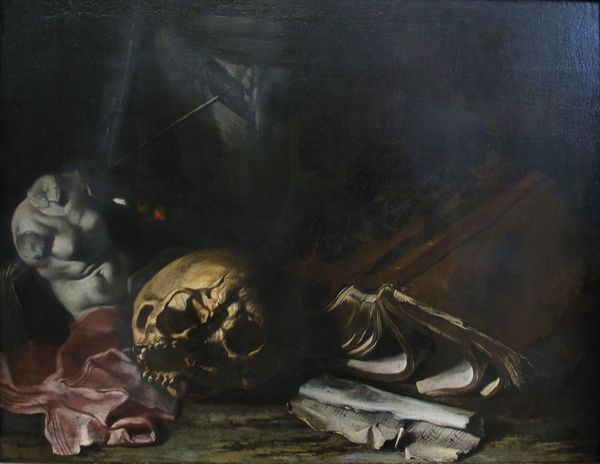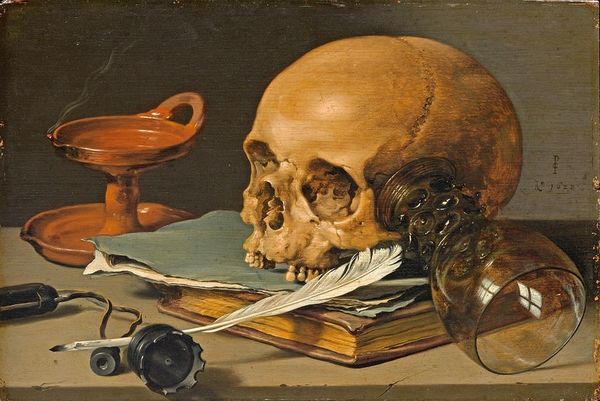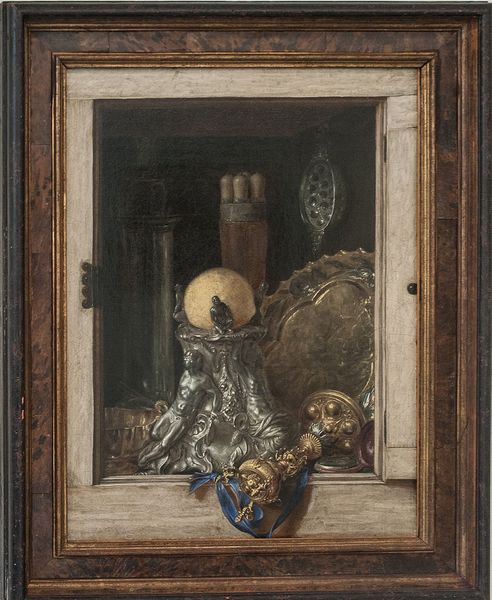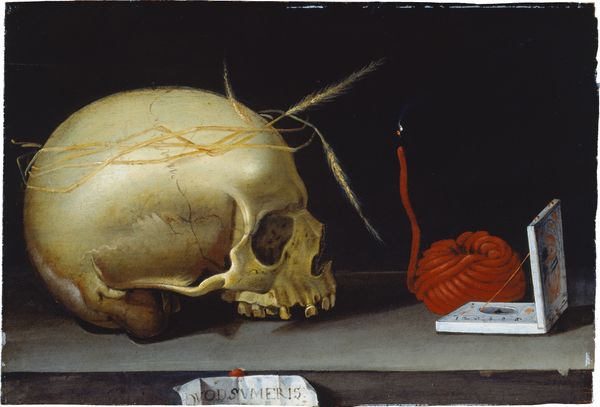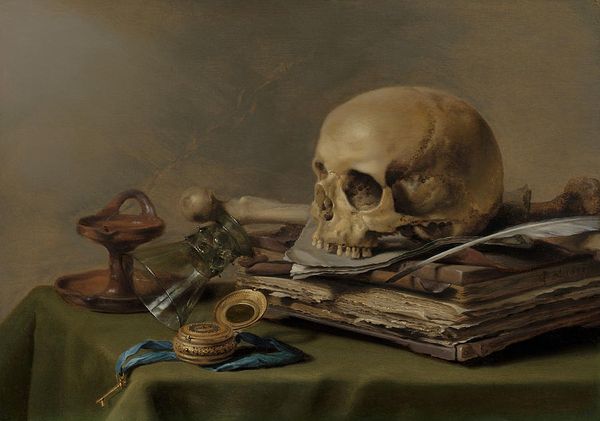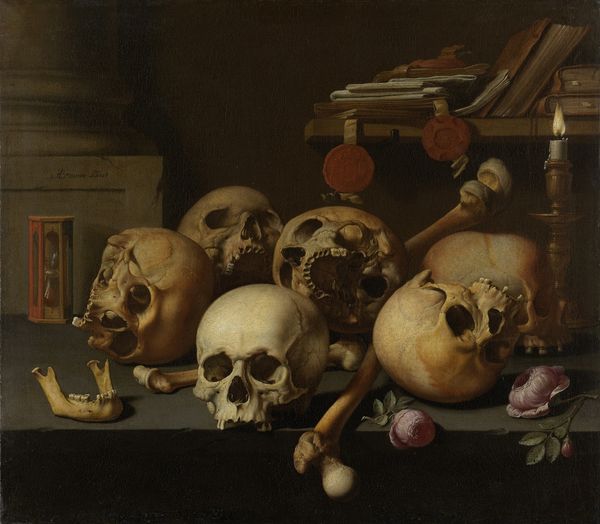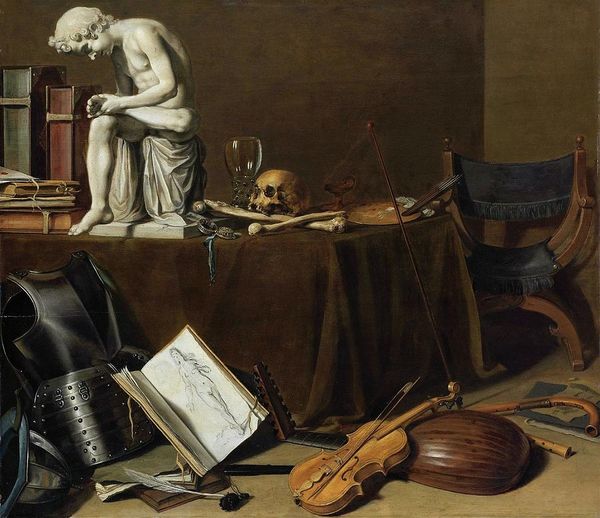
tempera, painting, oil-paint
#
baroque
#
tempera
#
painting
#
oil-paint
#
oil painting
#
vanitas
#
earthy tone
#
underpainting
#
painting painterly
Copyright: Public domain
Cornelis Norbertus Gysbrechts' 'Vanitas' is an exercise in oil paint, circa 1660, a period that saw the rise of illusionistic painting. The artist’s skill is evident in the way he's rendered varied textures: the dull gleam of the skull, the crispness of the paper, and the warm glow of the candle. This isn't merely about imitating surfaces; it's about understanding how light interacts with different materials. Oil paint is uniquely suited to this purpose, allowing for layers of glazing and subtle gradations of tone. The painting contains many symbolic elements, which include the skull, a bubble, and a candle. These all relate to the transience of life, but each also relates to a mode of production. The candle is made by a chandler, the letter is written with ink and paper, and so on. The skull itself would have been an object of study, perhaps even acquired from the anatomy theatre. By bringing these components together, Gysbrechts invites us to contemplate the human condition through the lens of material culture. He challenges the distinction between skilled craft and the intellectual pursuit of art.
Comments
No comments
Be the first to comment and join the conversation on the ultimate creative platform.
